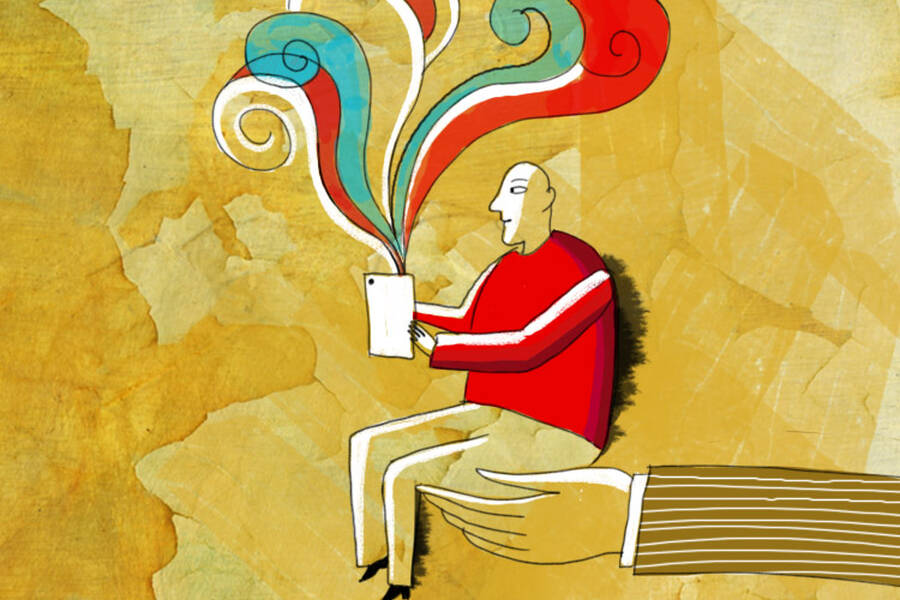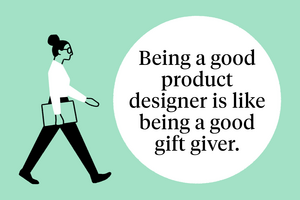Marketing Jun 8, 2017
A New Way for Companies to Measure Consumer Engagement
Brands see value in connecting with customers through meaningful experiences. Research backs this strategy.

Morgan Ramberg
You’re watching a TV show. An ad appears showing smiling people enjoying a can of pop. Perhaps this advertising message will persuade you to buy one for yourself. What’s more likely these days, however, is that you will need something more to pique your interest.
“The advertising system of the 20th century that was predicated on persuading you of the value of a product is no longer as effective as it once was,” says Bobby J. Calder, a professor of marketing at the Kellogg School.
Instead, marketers have to engage consumers in a different way, appealing to their own personal goals and values. And the way to do this is through experiences.
Take Red Bull, for example, a brand Calder calls the poster child for consumer engagement. The company built the energy drink around the experience of excitement and adventure. In addition to running ads, the company creates experiences around the product, like their flugtag events, where people build homemade flying contraptions and launch them off piers in cities around the world. Red Bull also creates video and print stories about exciting events that can be experienced vicariously. Sometimes marketers refer to this as experience marketing or as content marketing.
Whatever you call it, this new system of marketing requires a new way of measuring success. So just how effective is engaging consumers around experiences that they value?
“Companies are increasingly realizing that they can do things that are not advertising-centric but just use storytelling to create valued experiences.”
In a new, award-winning study, Calder and coauthors find that when consumers feel engaged in an experience, such as attending a concert or even reading a newspaper, they are more likely to say they will participate in that experience again. And, importantly, this sense of engagement spills over to products that are associated with it, with engaged television viewers feeling more favorably toward advertisements played during the show.
How to Measure Engagement
To conduct the research, Calder teamed up with Edward Malthouse at Northwestern’s Medill School of Journalism, Media, Integrated Marketing Communications, and Mathew Isaac at Seattle University, both of whom were formerly affiliated with Kellogg.
First, they identified five broad categories by which consumers could experience an event: by interacting with others, becoming transported, discovering something new, affirming their identity, or contributing to society. Using these categories, marketers could measure engagement as distinct from traditional metrics such as satisfaction.
The researchers settled on these broad categories because they cover a variety of experiences. Someone using Twitter and someone visiting a museum could be equally engaged in their pursuits, but the Twitter user is engaged because she is interacting with others, while the museum goer is engaged because she is discovering something.
The researchers then conducted three studies to try to understand how consumer engagement and behavior are connected. They started by looking at how consumers engage with events themselves.
In the first study, the researchers collected surveys from nearly 500 people who had attended the Chicago Jazz Festival six weeks earlier. The attendees answered yes or no questions about different aspects of their experience, touching on each of the five broad categories mentioned above. For example, within the “transported” category, people were asked whether the event “made me think of actually playing an instrument or singing myself.”
The researchers found that the more engaged a Chicago Jazz Festival attendee felt, the more likely she was to say she would either attend next year’s festival or go to another arts-related event like a concert or exhibit.
The second study also touched on the idea of repeat behavior, this time in the context of reading. The researchers surveyed nearly 11,000 newspaper readers and asked them to respond to questions like, “I bring up things I’ve read in this newspaper in conversations with others.” The readers were also asked how satisfied they were with various newspaper sections, as well as about their reading behavior.
The research revealed that the more engaged a reader was, the more time she spent reading, the more things she read, and the more completely she read them. In other words engagement strongly predicted reading behavior. It also found that engagement was a better predictor than satisfaction.
How Engagement Impacts Ads
In their last study, the researchers looked at both consumer engagement with the experience and how that engagement impacted how viewers felt about advertisements shown during the experience.
One hundred and fifty adults in Mexico were shown advertisements embedded in 10-minute segments from two television shows: a home-improvement program and a soap opera. Participants were then asked to answer questions about the show itself—like, “I love to discuss this program with my friends and family,” and “I like watching as a special treat.” But critically, participants were also asked how they felt about the ads they saw.
The researchers found that the more the viewer engaged with the show, the more she liked the ads within it. This is the first study to demonstrate clearly the positive effect of television engagement on commercials.
Wedding Research with Marketing Practices
Companies can use this information to figure out what is important to their consumers and how to keep them coming back, says Calder—even if they are not putting on a concert, or creating a newspaper or TV show.
The best experiences to help build a brand are those that are meaningful to a product’s target audience. To identify them, Calder suggests that companies first convene focus groups or individual interviews. Quantitative engagement measures can be used later as an evaluation metric.
“Simply talk with consumers about what they find meaningful in their lives,” Calder says. What do they value in their experiences?
Marketers could then find ways of creating actual or virtual experiences that consumers value, as Red Bull did.
For additional inspiration, consider what Oreo cookies did earlier this year when it created a “popup door” shaped like a giant Oreo in New York City.
Adventurous passersby who opened the door would be rewarded with a cool gizmo that delivered new flavors of Oreos. The door offered a fun way for customers to engage with a brand centered around the experience of taking a break from the hectic pace of life.
“Companies are increasingly realizing that they can do things that are not advertising-centric but just use storytelling to create valued experiences. What’s important is for consumers to feel a part of the story,” Calder says. “You can make an experience out of anything with a good story, and this pays off in engagement.”
Editor’s note: This research won the 2016 Journal of Advertising Research Best Paper award.



